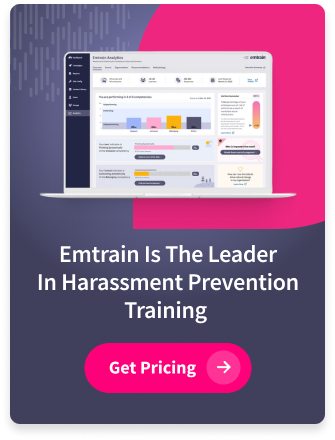I was helping a large multinational firm to develop diversity training programs when the executive in charge of the department asked us to train on employee relations topics such as EEO and AAP. This request was a bit unusual as it was beyond the scope of our regular work. Nonetheless, I worked with highly committed legal experts who generously spent their time and energy in the efforts to ensure that we were representing their domains precisely.
Developing effective training is complex for a variety of reasons, not the least of which is that you have to get the facts right. Secondly, you have to be relevant. Third, you have to be engaging. In the end, the product was technically robust and academically enriching, yet utterly forgettable in the mind of the learner, and therefore, irrelevant. In fact, I think most absently pressed the “next” button on their devices in one hand while they were doing something else. While the training passes regulatory requirements for compliance training, it fails as a learning tool because it doesn’t engage anyone’s hearts or minds. Most people approach compliance training this way.
However, the executive intuitively got the most important principle right when he agreed to take on the compliance training. I think that he saw some version of this in his mind:

What the brilliant HR leader realized but didn’t articulate is that DEI and employee relations initiatives are part of the same competency-based continuum. It stands to reason that the more you increase inclusion, the less you experience harassment and bias claims.
We also see what this executive saw – that there is a simple principle that unifies the worlds of compliance and diversity. It is this – the way people think and behave towards others makes all the difference. In fact, as educators committed to the greater social good we would like to build onto that executive’s thinking by adding the following:
- The thoughts and behaviors that drive inclusion and reduce the risk of harassment claims are built upon a foundation of social competencies.
- Social competencies are learned.
According to Janine Yancey, Founder and CEO of Emtrain, the vast majority of employee harassment or bias claims are really diversity and inclusion issues that escalate because of a lack of understanding and connection with an alienated employee. Diversity, inclusion, and harassment are on a continuum and when you don’t have strong diversity and inclusion within your workplace culture, you experience more harassment and bias claims. Conversely, stronger diversity and inclusion means fewer claims and stronger employee relations.
So how should Diversity (DEI), Employee Relations, and Learning leaders collaborate?
- Work backwards from the learner to the content: By this, we mean that the learning experience has to appeal to people’s hearts and minds. They have to want to pay attention and they have to understand the relevance of what is being taught to their daily lives. Emtrain provides engaging video content and a social competency-based learning platform that builds the skills required to increase inclusion and decrease the risk of harassment claims.
- Leverage in a CultureTech Platform: By using the Emtrain platform, HR leaders can leverage the opportunity provided by their legally mandated harassment training programs to assess and understand the social dynamics within their organizational culture. By pulsing learners for their observations during the learning experience, Emtrain collects data to answer the question, “How well do we work together?” The Workplace Social Indicators™ will help you identify and address areas of conflict, stress, and crisis so that you invest your resources developing strategic, data-driven initiatives.
The science behind our measurements makes otherwise invisible employee dynamics visible to the business. Our platform brings HR leaders together to understand and measure the competencies that lead to inclusion and respect. By developing and measuring these areas HR leaders can jointly work towards inclusion while reducing co-worker friction and negative employee conflicts.









